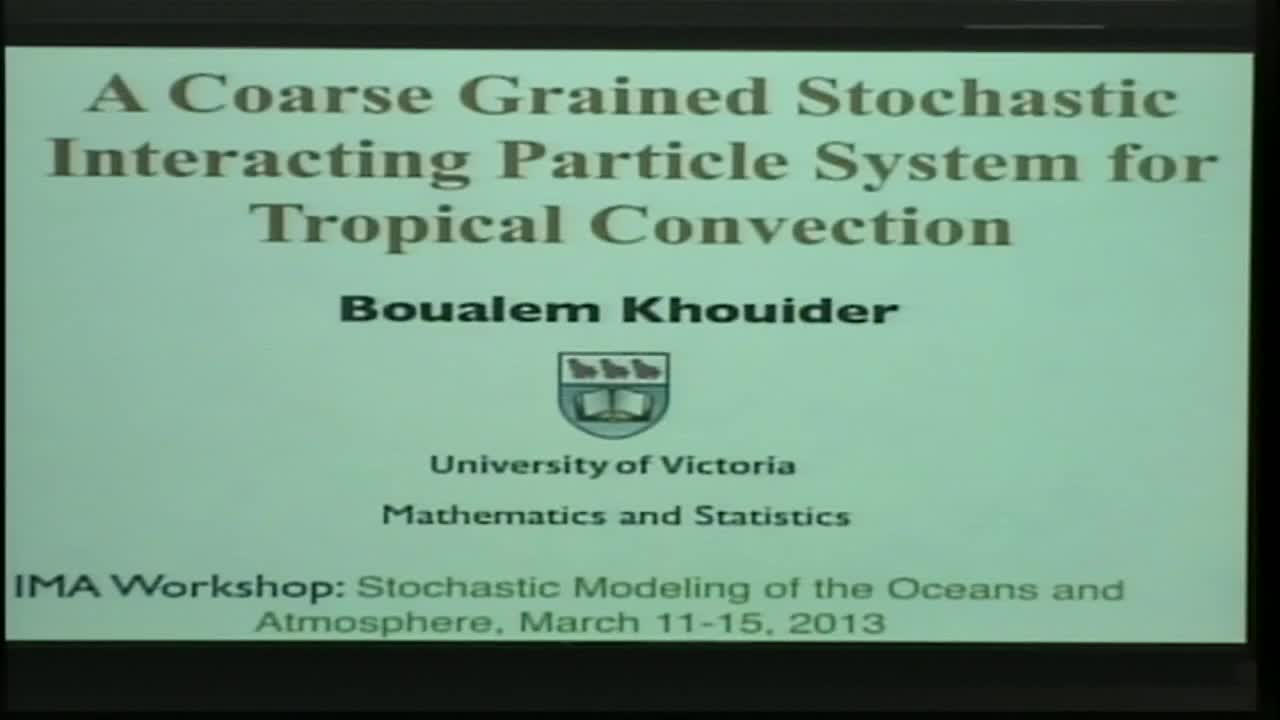Stochastic and Deterministic Models for Organized Tropical Convection
Presenter
March 12, 2013
Keywords:
- Deterministic models
MSC:
- 90B10
Abstract
Despite recent advances in supercomputing, current general circulation models (GCMs) poorly represent the variability associated with organized tropical convection. The reason for this failure is believed to be due to the inadequate treatment of organized convection by the underlying cumulus parameterizations. Most of these parameterizations are based on the quasi-equilibrium theory which assumes that convection has an instantaneous or rapid response to large scale instability and thus fail to capture the intermittent and sluggish nature of deep convection that are believed to be key for its tremendous capability to organize itself into mesoscale to planetary scale convective systems including synoptic scale convectively coupled waves and the Madden-Julian oscillation (MJO). Khouider and Majda (2006) recently introduced a new conceptual model parameterization for organized convection which is based on the interactions between three cloud types, congestus, deep, and stratiform that, according to recent satellite and in situ observations, are the dominant cloud features in organized tropical convective systems (TCS) of all scales. TCS’s are characterized by leading congestus cloud decks followed by deep convection and trailing stratiform anvils. As such, they present a self-similar vertical structure characterized by a backward tilt in moisture, zonal winds, temperature, and heating.
The multicloud model is very successful in reproducing the main features of observed convectively coupled waves and the MJO including their phase speeds and their zonal and vertical structures, in the context of both a simple model with a crude vertical resolution reduced to the first two baroclinic modes and a GCM. The key to this success includes the use of two main heating profiles, a half sine profile corresponding to deep convection that heats the whole troposphere and a full sine profile with a dipole corresponding to heating below and cooling above during the congestus phase and heating above and cooling below during the stratiform phase. Two versions of the multicloud model are proposed. A deterministic version that facilitates linear wave analysis and a stochastic version that considerably enhances the variability and captures the observed chaotic nature of organized convection. In the deterministic version, the three cloud types interact with each other through simple adjustment equations and a moisture switch function that depends on the dryness of the middle troposphere; when the troposphere is dry congestus clouds are favored and when the troposphere is moist deep convection is promoted. The stochastic model on the other hand is based on a lattice of sites that are 1 to 10 km apart that either are occupied by a cloud of a certain type or are clear sky. The lattice sites switch from one state to another according to whether the large-scale environment is favorable to one cloud type or the other, dependent mainly on CAPE and the tropospheric dryness.
In this talk, both the deterministic and the stochastic models will be presented and will be compared against each other. Some emphasis shall be put on the chaotic evolution of convective precipitation and gravity waves in the stochastic model.
Joint work with Andrew Majda and Yevgeniy Frenkel.
